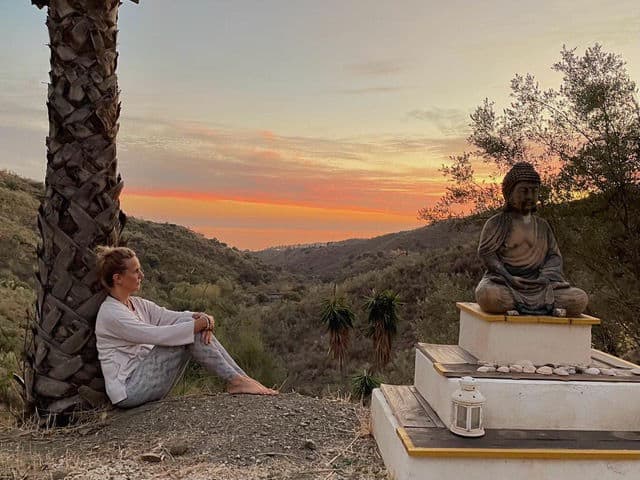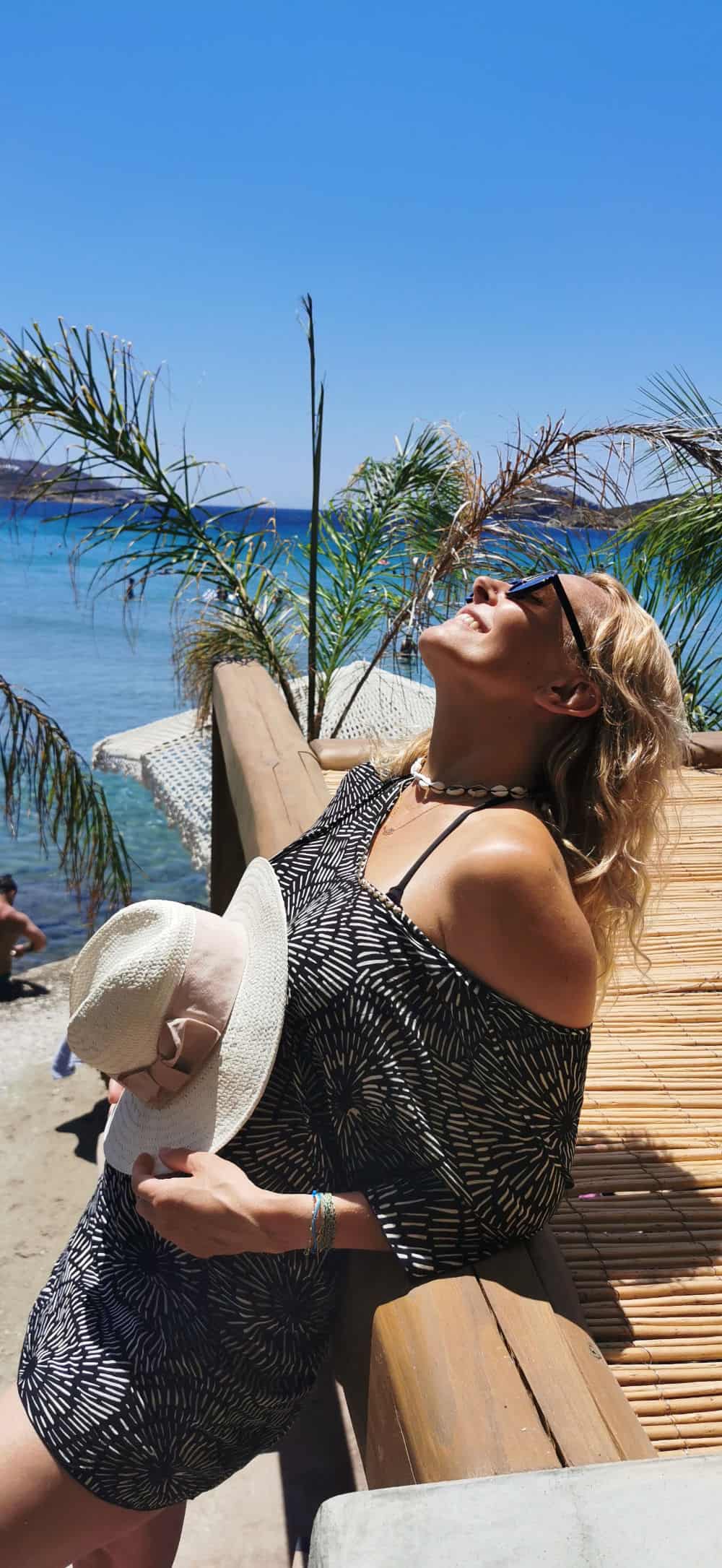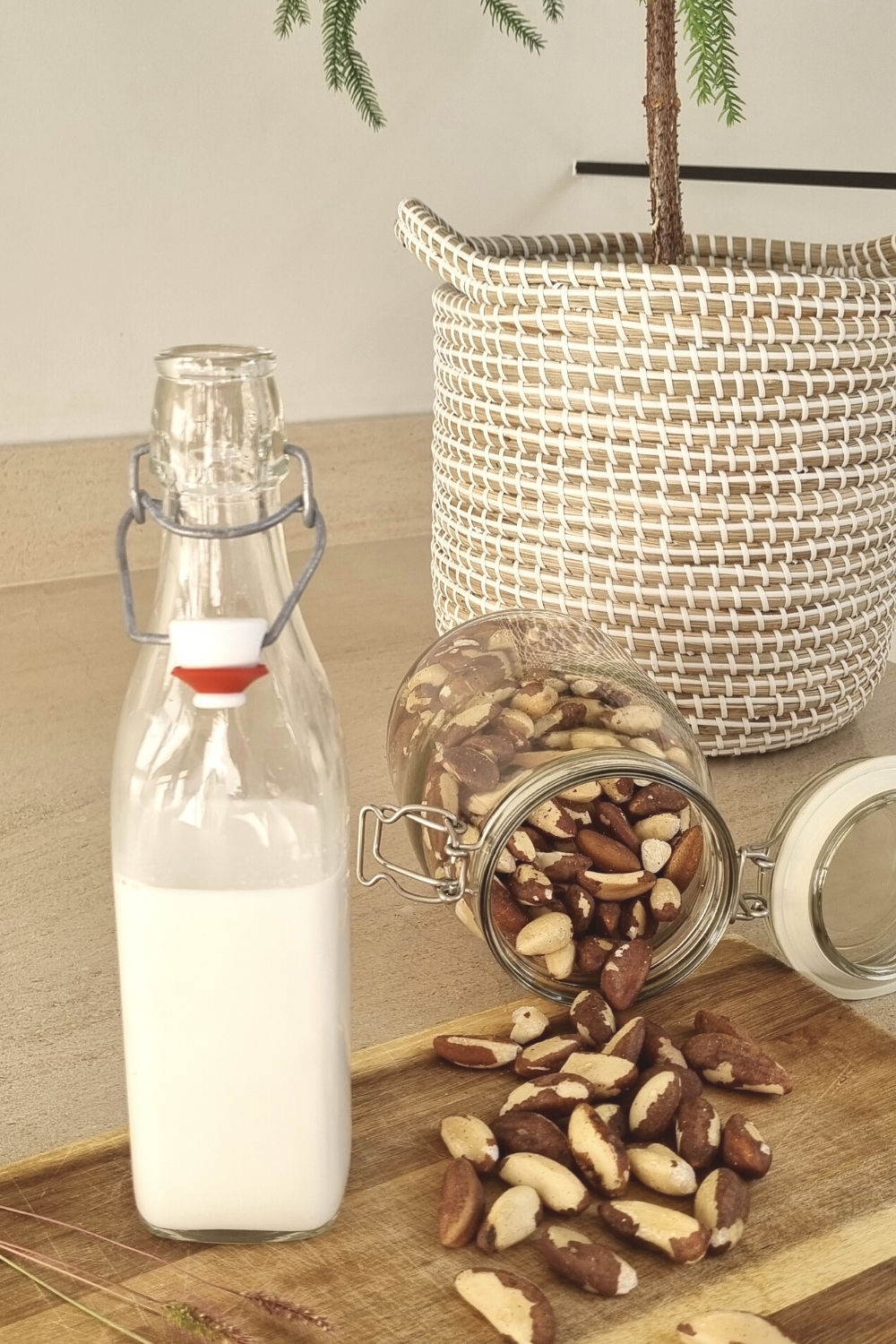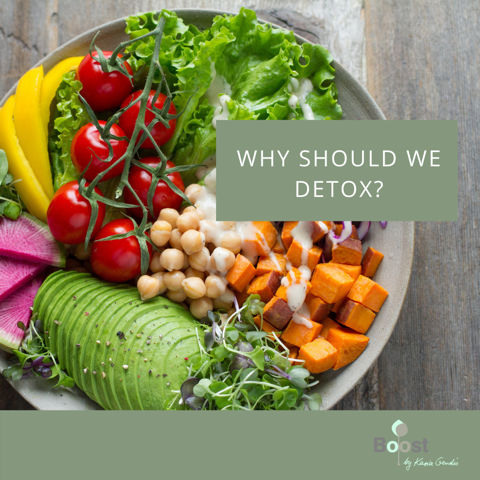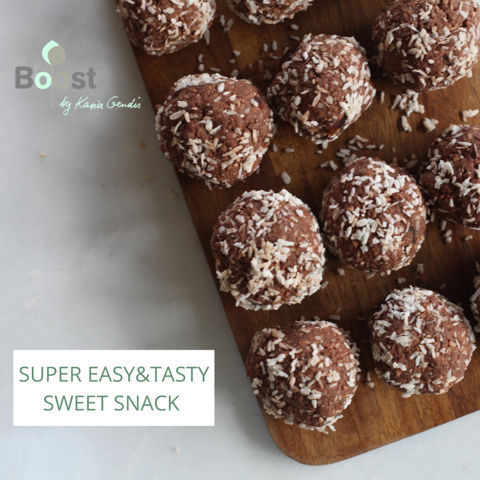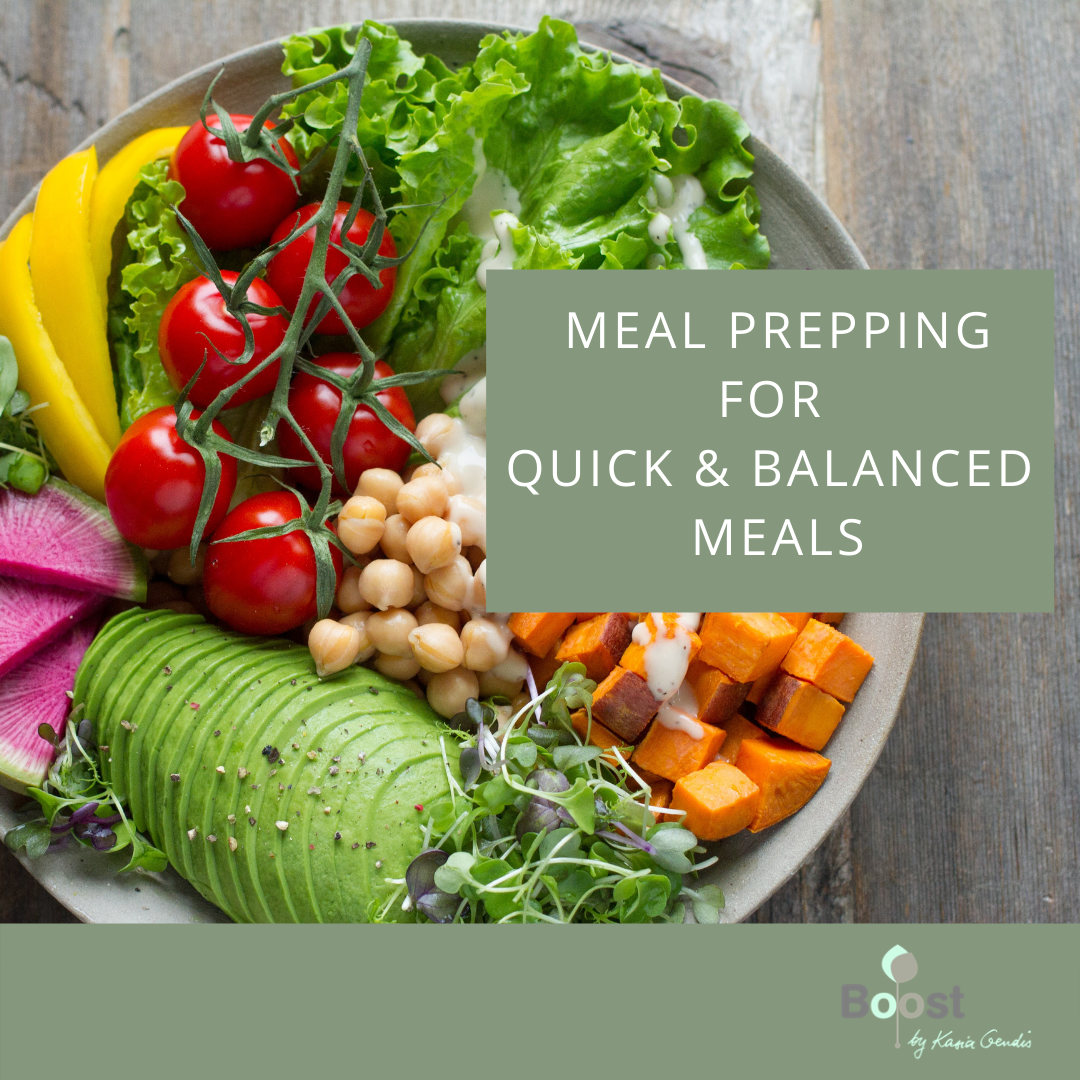Typically we run around all day, trying to tick off things of our to do list. That is usually our primary focus. But what if instead you use that time to focus on something, that could increase the feel good factor. No extra time required. Watch the video for a simple tip.
Author: Kasia Gendis
Too Busy Mind for Meditation Practice
Is “a too busy mind for a meditation practice” a thing?
We all know meditation practice is challenging, especially when we are starting out.
I so often hear that ‘a too busy mind’ is a reason why you give up at a very early stage or you do not even attempt to try the practices.
Let’s see if there is such a thing as “a too busy mind for meditation” .
The ancient teachings say that our mind (manas) is chanchala – always moving around and asthiram – never steady.
So even from that description we can see that it is the nature of the mind to wonder.
All minds wonder, some less other more, but they all do.
And that is something we need to acknowledge at the start of our journey with meditation. The mind will wonder.
But a not trained or cleanse mind, as we like to call it in yogic language, will have control over us. It will be constantly taking us to places, people, situations and stories often against our will.
Is overthinking, constant worries, fears of the future, reminiscing especially sad, emotional events over and over something that you notice is happening to you a lot?
Instead of being here and living your life in this moment you are mostly spending time in the past or in the future? It is said that over 90 % of our thoughts are the same every day. So we keep going over and over the same things. It sounds tiring even reading about it.
On the other hand it is actually a great thing that the mind can travel in time to the past and to the future, we can remember beautiful events or plan great things for the future. We just need to have more control over where our “manas” (mind) is going.
All of us have a capacity to get out of our head more. We can gradually get more in control of our thoughts with a regular practice. We can train our mind to become more still and focused through different tools and techniques.
Similarly as we cleanse our body daily taking a shower, brushing our teeth etc we should take care of our mind daily to keep it clean and spacious. Then, all the energy gained from overthinking can be directed towards more practices, contemplations and reflexions. Regular practices will allow us to improve and extend mind’s concentration capacities, freeing us from constant inner chatter, connecting us to more joy and purpose and helping coping with stress and overwhelm in life. It will help us think more positively and that in turn will attract even more positive outcomes to our life.
The more busy your mind seems the faster you should start your concentration practices.
If you would like to give it a try I will share the simplest technique we can use to bring ourselves into the moment, by making space in our mind.
Deep, even breaths. In Manasa Yoga we call it tanu 3. Let’s do a short practice now.
To prepare sit comfortably on the chair or on the floor, keep your spine straight, chest open, head centred and eyes closed. Then shift your awareness to your breath. Exhale completely and then inhale long counting to 4 and exhale long counting to 4 (both are done through the nose). If you are comfortable with this pace you can try to elongate the breath even more, so inhale in a count of 5, exhale in a count of 5. Repeat elongated breaths 5 times…and then sit for a moment in silence…
Reflect on the effect the breaths had on your mind. Does it feel a bit calmer, slower, more spacious?
You can contact me for a free consultation here if you need more guidance with starting your practices.
Let Go of What You Can Not Control
We know for sure that we can’t change the external life stressors that affect our mind on a daily basis. Life goes on and there is not much we can do about what is happening around us.
But fortunately, we can have control over our own mind. Here lays our POWER.
Commonly an external stressor triggers an immediate, spontaneous reaction in our mind.
That reaction comes from our emotional brain called amygdala.The prefrontal cortex (logical brain) is still turned off, as it usually needs more time to log back into the system. So when we encounter a stressor an immediate, often emotional reaction happens.
The good news is that we can influence this mechanism.
We can create SPACE between the stressor and the response to it – it will no longer be a reaction then.
There are many ways of creating this space that I usually work with my clients on. It should include mindset shift and a daily practice, as when introduced collectively they can produce a much greater effect.
One of the most important mindset shifts is: “Let go of what you cannot control”
I know it’s easy to say, but let’s explore this for a moment…
Your life consist of 2 elements in this respect:
- what you can influence and
- what you cannot control.
No matter what we do, nothing will change it. That’s how it is.
That is why it is so important to realise and accept it.
The rule, that I personally apply in all life situations, that seem to look like a challenge in the future (future emotion are those giving us most fear and anxiety) is:
“I will worry when I have this problem” or “I will cross this bridge when I get to it” .
We so often worry even before there is a problem.
This approach, of course, will not change the future stressor, but it will allow us to operate from a space of calm and focus, which may change our response and way of acting.
We must remember that life, in the general sense of the word, is beyond our control. So it is good to learn to let go and trust in what awaits us. That all will be good for us.
So how do you let go?
Focus on what you can influence.
Stick to your routine.
Move forward in small steps, without looking too far into the future.
Have faith and trust.
I know that faith, trust and hope are less tangible concepts, but very important.
It’s a bit like breathing, when we exhale completely, we have full faith that the next inhalation will come soon, but are we sure of this? NO! We don’t think about it, we trust that it will happen, so we don’t even stress with each exhalation… and that’s exactly the kind of trust we need in life 🙂 it changes a lot what comes to us, believe me…
So, in moments of challenge, remember to ground your attention in your body, feel your feet on the floor, open your chest, notice your breathing and take a few longer breaths that will help create that inner space from which you can respond rather than react and trust the Universe, in the highest and best outcome for you.
I am attaching a short 5-min practice of extended exhalations that can help you create that inner space.
By submitting your email to download the audio file, you agree to be included in our broadcast list. You may unsubscribe from the list anytime.
What is mindfulness?
Seems like mindfulness has become a really hot topic in recent times. We hear about it from almost everywhere.
We mostly understand it as a focus on being intensely aware of what we are sensing, feeling and experiencing in the moment.
But why it is so important and why should we practice it.
Typically we spend most of our time in the past or in the future. Only a small percentage of our life is spent in the present moment.
And that IS ACTUALLY WHERE OUR LIFE IS HAPPENING. Here and now.
Our mind has this amazing ability of shifting between the past, present and future but our body and our breath exist only here. It is a great ability for the mind to be able to travel in time, but a downside is that it takes us for uncontrolled rollercoaster rides of thoughts. Oftentimes we are finding ourselves in places we were not even intending to be in. It leaves us with restless mind, lack of attention, lack of sleep and complete exhaustion, as we entirely lose control over what is happening in our head.
That is why practising anchoring the mind into the present moment, into the experiences that are happening now is so important. Over time it will give us more control over what we tend to focus on. We will be able to use the mind to remember or plan things when we need to, but also we will be able to easily chose to be present to all that life is revealing to us right now.
Spending more time in the present moment initially requires a regular practice of concentration techniques, that will help us ground into now. Here we use breath and body awareness practices to keep strengthening our attention in the present moment. The more we are able to stay here, the more we start connecting into the deeper layers of our existence. Only from that space of the auspiciousness of the present moment the inner wisdom can start rising. We start connecting to the knowledge we all have within us. We start feeling ourselves not merely as a mass of flesh in a certain shape but also as a spiralling energy, similar to everything else is in the Universe (even quantum physics confirms us to be exactly that). Being more present will help us notice different, positive and less positive, tendencies in us, set powerful intentions in life to change what does not serve us anymore, let us connect to strong beliefs about ourselves and our unique capacities, help us create deep and caring connections with others and give us an opportunity to connect to our true essence. In daily life, we will be able to make more wholesome choices and appreciate more the beauty of the world around us. It will help us to be more in charge of our life process.
Ready to start the practice?
Appreciating the moment
Most of us have really busy lives. Our daily routine is usually fully packed and it is hard for us to find time to chill. Am I right?
That is why Summer time is such an amazing time to slow down a bit, and maybe spend some time away to recharge our batteries.
But even if we can not escape town to a relaxing, peaceful and sunny place we can still enjoy more active time, barbecues with friends, bike excursions, and just being outside more, in a warmer weather.
And if in that chilled and relaxed environment we can find space in the mind to stop for a while and appreciate our blessings that is the best thing we can do for our well being’s lasting effect.
I can only speak for myself though and how taking a break, slowing down and appreciating simple moments, relationships, touch, warmth, laughter helped me refill my energy over and over again.
I believe that we do not give enough appreciation to what we already have in our lives, on daily basis.
We spend most of our time chasing things we do not have yet or complaining about things we don’t want, forgetting to just look around us.
Noticing what is, gives us an enormous power to tap into the present moment, appreciate it and from there step with much more ease into the stream of all abundance. And then everything in life just starts happening as we would desire it to be or even beyond what we ever dreamt of.
That is why it is so important to take breaks to rest, relax, reconnect with ourselves and with our close ones, appreciate what we have, and really enjoy the gifts of the moment. Summer is a perfect time for that.
How often do you take breaks to fill yourself up again?
3 steps to help initiate a change
Any change seems difficult. We generally do not like changes. We prefer staying in our comfort zone and just repeating old patterns over and over again. For a lot of us it seems easier.
We live on an automatic pilot. The patterns are engraved in our bodies and also in our minds.
Any tweak needs energy to be invested. But it is not as difficult as it seems, if we have a set out system for it.
I will use a simple example from my life of the set patterns being changed.
When I first moved back to four seasons, after living in tropics for 15 years, my body did not handle it very well. For the first few months of the cold season I was freezing all the time, no matter what I wore. My body craved totally different things or different quantities to what I was used to eating in a hot weather. A funny one was extra virgin olive oil, when I would see the bottle of it I felt like literally just downing all of it in one go :)) That was a sign for me. The body needed a change in the diet. More warming foods, more healthy fat, more spices. I did just that.
I also went to see my Tibetan Medicine doctor and he told me that my body forgot its warming function, as it was not using it for so many years. Now I needed to give it time to readjust. And it sure did, after a few months.
But what I struggled with for longer was my head, that is the mental pattern. Each year, around the same time, I would just totally resist the change of seasons. Just denying it. Funny right, as it is not really possible to avoid, yet my head for a long time was struggling. I even would refuse to buy Autumn flowers. When I would see them in the shops it would create panic and sadness. I know it sounds quite dramatic.
Then, one sunny day as I was looking at the beautiful, colourful autumn leaves waving to me in the wind when it suddenly hit me. The beauty of the nature’s cycle. How the flora blooms in the Spring, is totally out there throughout the Summer, till Autumn comes. Then it slowly starts closing up again. Getting into a winter rest. A reflective and restoring vibe.
It is needed for us too. After the Summer and all its craziness it is time to go within, reflect and restore.
So I focused on all the positives of that change. The cosiness of the couch, the softness of the blanket, the warmth and flavours of tea, the taste of all the colder season spiced foods, the pleasantness of the candle lights and last but not least the luxury of more time to go within. The Danish call this cosiness hygge. So that is what I gave in to.
Suddenly it all seemed so amazing and highly needed. It was just at that time when I felt a shift. The resistance in my head started to melt away, exactly the same way it happened earlier in my body, naturally, with no objection.
So based on my experience I would like to share with you the process of the change. It can be used to initiate any change in your life that you set yourself up for.
Step 1 – Identify the Resistance
So for example, if your change would be to eat healthier, just pause and see what is stopping you from it? Is it lack of time, lack of knowledge, lack of interest in cooking. Find that exact obstacle.
Step 2 – Soften Around that Resistance
Focus on all the positives of the change. In our example focus on how would you feel after you make your dietary changes. Maybe feeling more energy, maybe sleeping better or maybe just finally stopping to worry about your weight, as it will be all taken care of by your body, working super efficiently. Just dwell on those for a moment. Imagine that you already have it, feel it, be in that energy of success.
Step 3 – Write down 1-2 Small Steps towards your goal, that you can start right now
Maybe you could focus on adding more healthy foods first, before you start cutting out what does not serve you. For example adding more vegetables to each of your meals. Or focusing daily on drinking more water. It is that simple.
The above steps will work for initiating any change. Just take a moment, sit down, rect on what would you like to change and go through the steps.
If you need support you can always book a free chat with me here
And remember “Great things never come from comfort zone”
Step out of it! You can do it!
Brazil Nut Milk
I love anything with Brazil nut!
If you are like me you will love this Brazil Nut Milk recipe.
It is super easy and very fast to make.
Brazil nuts are a nutritional bomb. They have a high proportion of monounsaturated fat, which is a healthy fat.
They are particularly high in selenium, a mineral with potent antioxidant properties. They also contain magnesium, zinc, calcium and vitamin E.
Eating Brazil nuts helps reducing inflammation in the body, supports your brain, improves thyroid function and heart health.
Doesn’t it sound convincing?
All you need to do is mix three ingredients and you will have a beautiful, creamy, home made Brazil Nut Milk, that you can enjoy in your hot or cold drinks, smoothies or any other way you like it.
Why should we detox at all?
Detox is an ongoing process that is vital to our health, happiness, and immune system. The body has a sophisticated system in place to detox itself naturally through the colon, liver, lungs, lymphatic system, and the skin. But evolution simply cannot keep up with the increase of toxins we face.
In the modern world, we are increasingly bombarded with toxins. There are over 80,000 chemicals used in industry. Pollutants, chemicals, herbicides, pesticides and toxins find their way into our homes. Radio waves from computers and cell phones are putting increasing strain on our bodies. And even if we eat unprocessed foods, we have constant stressors in life, and stress, which triggers cortisol release, is the number one toxin.
When the body is overburdened with toxins, excess mucus is created to protect the organs.
Our liver does the best job it can to protect us, and it does this by wrapping those toxins in mucous and storing them in fat cells. We can’t burn the fat until we release and process that toxins that are stored in it. The reality is that no matter how much you exercise, eat right, and manage your stress, you won’t be able to lose that stubborn fat until you detox and get rid of those toxins for good.
Excess mucous also leads to inflammation in the body and the host of issues associated with it.
Today, my practice is full of clients suffering from hormonal issues, fatigue, food allergies, weight problems, digestive distress, skin problems, headaches, depression or autoimmune disorders. I also work with many people who are busy and in search of simple guidelines about how to make healthy food choices, and those who desire techniques for de-stressing or balancing their moods.
Healthy cells provide the foundation for a healthy body. Your cells need the following to thrive:
- Oxygen
- Unprocessed foods containing nutrients and minerals
- Hydration
- Well-functioning detoxification pathways
Disease and malaise exist in a state of imbalance. Detoxing regularly allows your body to maintain a state of healthy balance. I allows the body to safely and effectively release the toxins that have found their way into your organs, fatty tissues and blood. Your body will reset on a deep cellular level, paving the way for improved vitality, digestion, weight loss and immune health.
Signs your body needs a detox
- Carrying excess weight around your belly
- Experience sugar or salt cravings on a regular basis
- Have skin blemishes and breakouts
- Can’t think straight or feel like you have brain fog
- Get the late afternoon energy slump
- Wake up still feeling tired
- Feel like you’ve lost your glow
- Migraines
- Bloating, constipation or diarrhoea
- Low energy
- Feeling sluggish
- Pains and aches in muscles and joints
are just some of the common ones.
Choosing the right detox
If you’re new to detoxing, you might think that you have to do a really extreme program to get good results, but that’s just not true. And, doing an extreme detox can actually make things worse because it can throw your body into a state of shock. The reality is that your body does not care whether you fit into your skinny jeans. Your body is focused on one simple thing, and that is keeping you alive! When you jump into an extreme detox without preparation or previous experience, your body experiences that detox as a crisis. And when your body goes into crisis mode, the last thing it wants to do is to create extra work for itself. Instead, it focuses on preserving energy and slowing down your metabolism by burning fewer calories and less fat to protect you and keep you alive. That’s the exact opposite of what you want to have happen when you’re detoxing.
What to do instead.Trust your instincts and your body. Although detoxing isn’t always comfortable, most of us can tell the difference between experiencing a little discomfort and something that’s really wrong. It’s okay to say no thanks to a detox that doesn’t sit right with you. In fact, there’s nothing wrong with you, it simply means that isn’t the right detox for your body. Our bodies are different, and what we need might be different from what our best friend or neighbor needs. If you haven’t detoxed before or if you’re struggling to find the detox that’s right for you, I encourage you to try a detox that’s built around adding lots of detoxifying foods to your diet rather than restricting and depriving you of food. These kinds of detoxes are just as effective and can actually be better for you because you’ll stick to the whole program instead of giving up halfway through. Even better, your body won’t go into crisis mode.
The right kind of detox for the season you’re in
Have you noticed how everyone tends to think they can make huge lifestyle changes on January 1st, after weeks of overindulging? Why do we think that we can all of a sudden make a drastic switch during the darkest and coldest time of the year for many of us?
I know many people are determined to drop the weight they gained over the holidays, but doing an extreme diet can set you up for disaster for the rest of the year.
The problem with doing an all juice cleanse in the winter is that your body is aware that it’s winter! Again, on a cellular level, your body’s primary purpose is to keep you safe and warm. When you deprive your body of sufficient calories, fat and protein when it’s in winter survival mode, your body will mis-read what’s happening and assume that you’re starving. When your system is in starvation mode, your body does everything it can to hang on to every last calorie to keep you from dying. So what does this mean? When you’re on a juice cleanse in cold and dark winter months, the body slows down your metabolism and does everything it can to keep you alive. But when you start eating real food again it takes a while for the body to realise that you are no longer starving, and that means it continues to hoard those calories and keep metabolic burn at a low rate until your body feels safe enough to come out of starvation mode. So not only do you cause a problem for your system while detoxing if you’re doing the wrong kind of detox for the season you’re in, but you also will create a metabolic problem for weeks after.
What to do instead: Green juices and smoothies are a really powerful tool when it comes to detoxing, but they are best used in spring and summer detoxes. So when you’re looking for the right detox for you, be sure to look for one that understands the role seasons play in developing the detox that will be best for the time of year.
I’ve discovered that for myself and for my detox clients that doing an extreme detox once a year is not particularly effective. In fact, I’ve found that what usually happens is, despite the best of intentions, many people start these detoxes and then cheat through most of them or give up halfway through. I’d rather have you dedicate 5-7 high quality days to yourself and to detoxing your body a few times a year and really stick with it rather than having you do one 21 day juice cleanse where you’re miserable and suffering and you end up eating a grilled cheese sandwich halfway through because you’re so hungry.
Detox is a chance to reset your eating and overall lifestyle habits
Approach your detox as a chance to reset your eating habits and a way to celebrate your body, and not as a punishment or something that has to make you suffer.
Instead of looking at a detox as punishment, what if you looked at the experiences as an opportunity for you to provide some high quality self-care for yourself?
Women often get so caught up in taking care of others that our own self-care falls to the wayside. And here’s the problem with that – when you don’t take care of yourself, you eventually run out of energy to take care of everyone else, too.
As I often say to my clients, you simply can’t pour from an empty pitcher. What that means is, when you’ve given all you have to give, that is not the time to dig deeper to find the last bit of reserves you have. Instead, when you’re running on empty, that’s when it’s time for you to switch gears and give some attention to yourself.
What to do instead: Use detoxes as a time for you to recharge and renew your body, mind and soul. You will experience transformations in your life that revolve around more than just food! A week of time focused on yourself helps to get healthier, more connected to your body and it’s signals, and it also helps to get clarity on how to feel more balanced in your lives.
The really cool thing about allowing yourself to look at a detox as a way of filling your empty pitcher is that when you’ve been renewed and rejuvenated, your capacity to show up for yourself and others grows exponentially.
I run seasonal group detoxes. You can always contact me with any questions you have at kasia@boostbykasiagendis.com
Protein Balls
This is probably the easiest and one of the most delicious quick snacks you can make.
There are endless amounts of variations, but I would like to share with you a basic recipe so you can make it really fast with just 3 ingredients (OK maybe 4:).
All you need is:
1 cup of pitted dates
1 cup of any nuts
2-3 heaped tablespoons of raw chocolate
5 drops of doTerra or any other edible orange essential oil or just zest of an orange (both optional)
Throw everything into a food processor. Blend until well combined. Divide into smaller portions and roll in your hands into balls. Chill and eat!
It taste much better than it sounds, I promise.
Alternatively you can roll the balls in coconut flakes, sesame seeds, raw chocolate, matcha powder to name just a few ideas.
If you are making a bigger batch, you can always freeze some for later for when you feel like having a bit of sweetness.
Bon Appétit
10 Meal Prepping Tips
1. Make a list of dinners for the week. They should be easy and ones that you cook often so it is not overwhelming.
2. Pick dishes with ingredients that you can prepare once and use multiple times. For example, mushrooms cooked once can be used again for scramble eggs, tofu, salads, sandwiches, veggie patties etc.
3. Invest in good quality containers. Start with whatever you have and gradually invest in changing them into glass.
4. Organise your spice cabinet. Have lots of different spices available on hand. You can gradually build that up, getting 1-2 each time you shop. Arrange them in your drawer in groups for different meal themes like Asian, Herbs, your local cuisine etc.
5. Cook in batches! Either schedule 1-2 hours at the beginning of the week, ideally after shopping, or you can do it once you cook your first dinner of the week (that is what I end up doing very often). You can use all your prepped produce to assemble quick meals like salads, soups, bowls, vegetables, tofu, scrambled eggs, omelettes and much more.
- When you’re waiting for a pan to heat up or water to boil, chop extra veggies and either fry them lightly or bake them (almost any vegetable can be done in this way).
- Cook more grains than you would use for one meal, for example brown rice, black rice quinoa, buckwheat, millet, etc. and store them for later use.
- Pre-fry or just chop and marinate your meats or tofu and store ready in the fridge.
- Cut your fresh veggies for salads and snacking like carrot, celery or cucumber sticks (it can easily last a couple of days).
- Roast chickpeas in the oven (drain, cover with olive oil add any spices and put into the oven till lightly browned).
- Make egg or tuna salad that you could use as a snack on top of cucumber slices for example.
- Make sweet snacks to have on hand like chia pudding and protein balls.
- Pre- cook broth, bone or veggie, to have it on hand when you want to assemble a quick soup with veggies, tofu, or chicken (you can use the prepped, fried, that you have already in the fridge:), pre-cooked grains or anything else.
- Boil eggs and store them ready to use in the fridge.
6. Use a pressure cooker to make your stock, soups or curries. You just put everything together and let it cook. You do not have to attend to it much.
7. Prep your smoothies. If you are like me, a Summer smoothie lover, portion your smoothie ingredients, like vegetables and fruit and freeze them. When you need it, just take out the daily portion, add liquid and any powders or seeds (hemp protein, chia, flax seed, maca, baobab, spirulina, chlorella and anything else you like to add) blitz it, and you are ready to go.
8. Sheet pan dinner. I love this concept. Put any chopped and sectioned veggies, meat, fish, tofu combination on a tray and bake in the oven. If different ingredients need different baking time keep adding whatever requires less time later.
9. Make meal prepping fun.
- involve family members to prep with you, smaller kids love it, not so sure about teenagers hahah
- use this as your quiet time, focus on the action of chopping and arranging, be present with it. It will be like meditation for you if you focus just on that. Chopping can be very therapeutic, relaxing, and cleansing for the mind
- play your favourite songs dance and sing as you chop
10. If all else fails, make sure to keep some ready meals in your freezer (if I cook too much and I know we won’t eat it the next day I just transfer it to the freezer for one of those emergency days).


